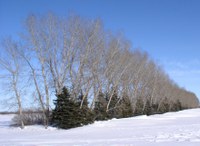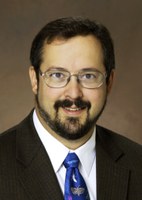Dakota Gardener: North Dakota Forestry – By the Numbers
(Click an image below to view a high-resolution image that can be downloaded)
By Joe Zeleznik, Forester
NDSU Extension
I’ve completed nearly 20 years at NDSU as the Extension forester and I’ve seen a lot of the state (and its trees and forests) in that time. I sometimes wonder how many miles I’ve driven through the years. Numbers fascinate me. They can offer a clear understanding of a situation.
For example, we could say that trees had great growth in 2022. My question would be, “How great is great”? What one person considers great, another person might consider to be average. Putting a number to that claim of great growth – say, two feet of new growth for ash trees in central North Dakota – allows for clearer communication.
Here are some numbers for North Dakota trees and forests.
0 – The number of emerald ash borer beetles found in our state as of August 2022. There are a lot of people searching for this pest and we’ve been looking for it for almost 20 years. We still haven’t found it here and I’m grateful.
2 – The number of new city foresters in North Dakota in the past year (or so). Welcome to the folks in Dickinson and Minot. At least eight cities in North Dakota have a full-time city forester. It’s a tough job and I appreciate everything that these folks do.
6 – The number of state forests in North Dakota. Together, these forests cover over 13,000 acres; more than half of that is in the Turtle Mountain State Forest.
40+ – The number of native trees and shrubs, and half-shrubs. Believe it or not, this one is rather tricky to list. North Dakota sits at the intersection of eastern forests and western forests, and early explorers may not have always identified those rare species properly. Some sources say that sugar maple is native to North Dakota, while others do not.
48 – North Dakota’s rank among states in terms of forest acreage. We’re ahead of Rhode Island and Delaware. The exact amount of forest acreage in North Dakota is debated. Part of this stems from the definition of “forest” – when does a grouping of trees become a forest? Does a quarter-acre patch of shrubs in a wooded draw count as forest? How about a single-row windbreak? Believe it or not, this question is still being debated to this day.
50 – North Dakota’s rank in terms of percent cover of “timberland”. Timberland is different from forest land and includes a measure of the amount of wood that’s growing. Sometimes definitions help to clarify things, allowing clearer communication. Sometimes they don’t.
55 – The number of Soil Conservation Districts (SCDs) in North Dakota. These small organizations provide a huge service to all of the state in terms of assisting landowners with applying conservation practices. In particular, SCDs assist in establishing windbreaks around farmsteads, fields and in areas that protect roadways from drifting snow in the winter.
8,000 – The number of trees planted by the Grand Forks County SCD in 2022. These were distributed across 44 sites and spanned 55,000 linear feet, with over 33,000 linear feet of weed barrier fabric applied. This was actually a tough year for completing tree plantings, as it was so wet throughout much of the state. I wonder how other SCDs performed in their tree-planting efforts.
78 million – The estimated number of ash trees in North Dakota’s native forests, windbreaks and urban forests. We stand to lose a lot when EAB arrives. Let’s continue to do our best to prevent this pest from entering our state.
I hope these numbers gave you a better understanding of the state of forests and trees in North Dakota. In the midst of the prairies, farms and communities, the trees provide a great amount of cover, protection and shade. That was a vague statement. How great is great?
NDSU Agriculture Communication – Aug. 23, 2022
Source: Joe Zeleznik, 701-730-3389, joseph.zeleznik@ndsu.edu
Editor: Kelli Anderson, 701-231-6136, kelli.c.anderson@ndsu.edu




